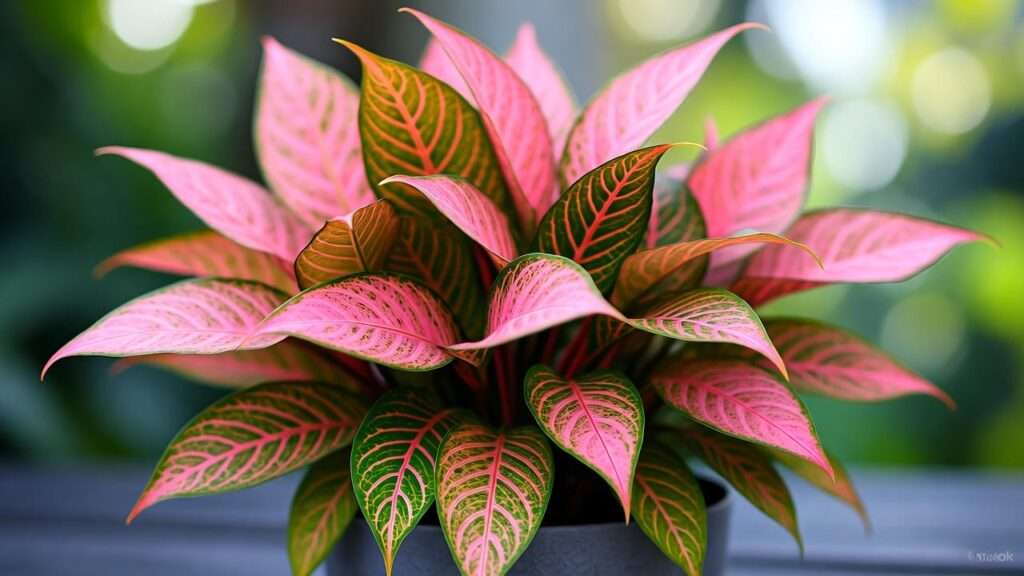Picture this: a burst of vibrant pink and green foliage brightening your home, turning heads, and sparking joy with every glance. Meet the Pink Panther Plant, a stunning houseplant that’s as easy to care for as it is eye-catching! Officially known as Tradescantia spathacea ‘Pink Panther,’ this tropical beauty is a must-have for plant lovers looking to elevate their indoor jungle. Whether you’re a beginner or a seasoned plant parent, this comprehensive guide will equip you with expert tips to grow a thriving Pink Panther Plant. From lighting to propagation, we’ve got you covered with practical, actionable advice to ensure your plant’s foliage stays vibrant and healthy. 🌱
As a horticulturist with over a decade of experience cultivating tropical plants, including various Tradescantia species, I’ve seen firsthand how the Pink Panther Plant can transform spaces when given the right care. This article dives deep into everything you need to know, offering step-by-step instructions, troubleshooting tips, and styling ideas to make your plant a showstopper. Let’s grow that lush, colorful foliage together! 😺
What is the Pink Panther Plant? 🌿
Overview of Tradescantia spathacea ‘Pink Panther’
The Pink Panther Plant, a cultivar of Tradescantia spathacea, is a compact, rosette-forming houseplant celebrated for its striking pink, green, and purple leaves. Native to Central and South America, this tropical gem thrives indoors, making it a favorite for urban gardeners. Its leaves, often striped with vivid pink and backed with deep purple, give it a playful nickname inspired by the iconic cartoon character. Unlike its larger relatives, the Pink Panther stays petite, typically reaching 6-12 inches tall, perfect for small spaces.
Why Choose the Pink Panther Plant? 😺
Why is this plant stealing the spotlight? For starters, its vibrant colors make it a standout in any room, from minimalist apartments to boho-chic homes. It’s also relatively low-maintenance, forgiving minor care mistakes, which is ideal for busy plant parents. Plus, studies like NASA’s Clean Air Study suggest Tradescantia species can improve indoor air quality by filtering pollutants, adding a functional perk to its aesthetic charm. Whether you’re decorating a desk, shelf, or windowsill, the Pink Panther Plant delivers tropical vibes with minimal effort.
Ideal Growing Conditions for the Pink Panther Plant ☀️
Light Requirements
To keep your Pink Panther Plant’s colors popping, bright, indirect light is key. Place it near an east-facing window for gentle morning sun or a shaded south-facing spot to avoid leaf scorch. Too little light, and the pink hues may fade to green; too much direct sun, and leaves can burn. If you notice leggy growth or dull colors, adjust its position. A sheer curtain can diffuse harsh sunlight, creating the perfect balance for vibrant foliage.
Pro Tip: If natural light is limited, consider a grow light (6500K full-spectrum) for 10-12 hours daily to mimic ideal conditions.
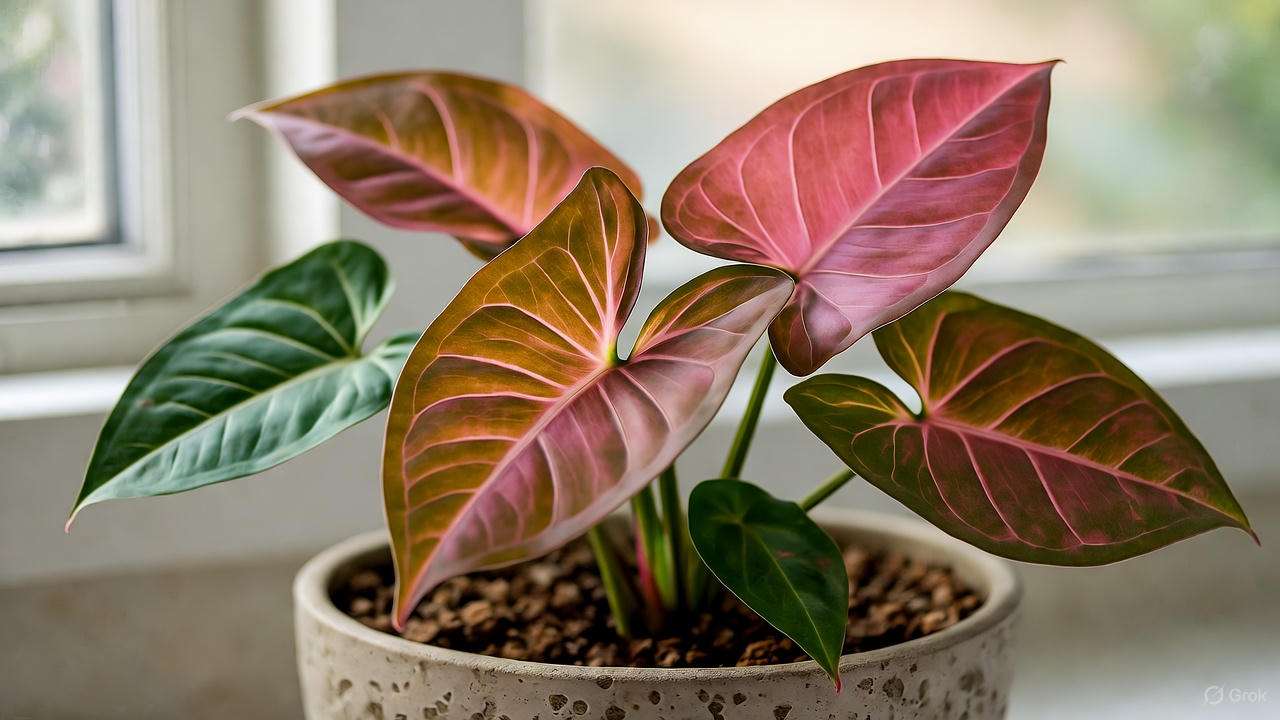
Temperature and Humidity
This tropical plant thrives in temperatures between 60-80°F (15-27°C). Avoid placing it near cold drafts or heating vents, as sudden temperature swings can stress it. Humidity is equally crucial—aim for 50-60% to keep leaves lush. In dry climates or winter months, boost humidity with a pebble tray filled with water or a small humidifier. Misting works too, but avoid overdoing it to prevent fungal issues.
Example: A bathroom with a window or a kitchen corner often provides the humid microclimate this plant loves.
Soil and Potting Needs
The Pink Panther Plant prefers well-draining soil to prevent root rot. A mix of peat-based potting soil, perlite, and sand (2:1:1 ratio) works wonders. Choose a pot with drainage holes to let excess water escape. Terracotta pots are ideal for their breathability, but any pot will do as long as drainage is prioritized.
DIY Soil Mix: Combine 50% peat moss, 25% perlite, and 25% coarse sand for a lightweight, airy mix that promotes healthy roots.
Step-by-Step Care Guide for Pink Panther Plant 🌱
Watering Best Practices
Water your Pink Panther Plant when the top inch of soil feels dry—typically every 7-10 days in spring and summer. In winter, reduce to every 2-3 weeks, as the plant’s growth slows. Overwatering is a common mistake, leading to yellowing leaves or mushy roots. Always check the soil before watering, and ensure excess water drains completely.
Signs to Watch:
- Overwatering: Yellow, droopy leaves or a soggy base.
- Underwatering: Wilting or curling leaves with dry soil.
Seasonal Tip: Use room-temperature water to avoid shocking the plant’s roots.
Fertilizing for Vibrant Growth
Feed your Pink Panther Plant every 4-6 weeks during the growing season (spring to summer) with a balanced, water-soluble fertilizer (e.g., 10-10-10). Dilute to half-strength to avoid burning delicate roots. In fall and winter, skip fertilizing as the plant rests. For eco-conscious growers, compost tea or worm castings provide a gentle, organic boost.
Warning: Over-fertilizing can cause leaf tip burn, so stick to a consistent schedule and monitor growth.
Pruning and Maintenance
Regular pruning keeps your Pink Panther Plant bushy and vibrant. Use clean, sharp scissors to trim leggy stems or remove dead/yellow leaves. Cut just above a leaf node to encourage new growth. Cleaning leaves with a damp cloth prevents dust buildup, which can block light and attract pests.
Propagation Bonus: Save healthy cuttings for propagation (more on this below)!
Repotting Tips
Repot every 1-2 years or when the plant becomes rootbound (roots circling the pot’s interior). Choose a pot 1-2 inches larger in diameter, and refresh the soil to replenish nutrients. Spring is the best time for repotting, as the plant is actively growing.
Step-by-Step:
- Gently remove the plant from its pot.
- Shake off excess soil and inspect roots for rot.
- Place in a new pot with fresh soil mix, water lightly, and keep in indirect light for a week.
Pro Tip: If the plant isn’t rootbound, refresh the top layer of soil annually instead of full repotting.
Common Problems and Solutions 🐞
Pests (Spider Mites, Aphids, Mealybugs)
Pink Panther Plants can attract spider mites, aphids, or mealybugs, especially in dry conditions. Look for webbing, sticky residue, or white cottony spots on leaves.
Solutions:
- Wipe leaves with a mix of water and mild dish soap.
- Apply neem oil or insecticidal soap weekly until pests are gone.
- Prevent infestations by maintaining humidity and cleaning leaves regularly.
Prevention: Ensure good air circulation and avoid overcrowding plants.
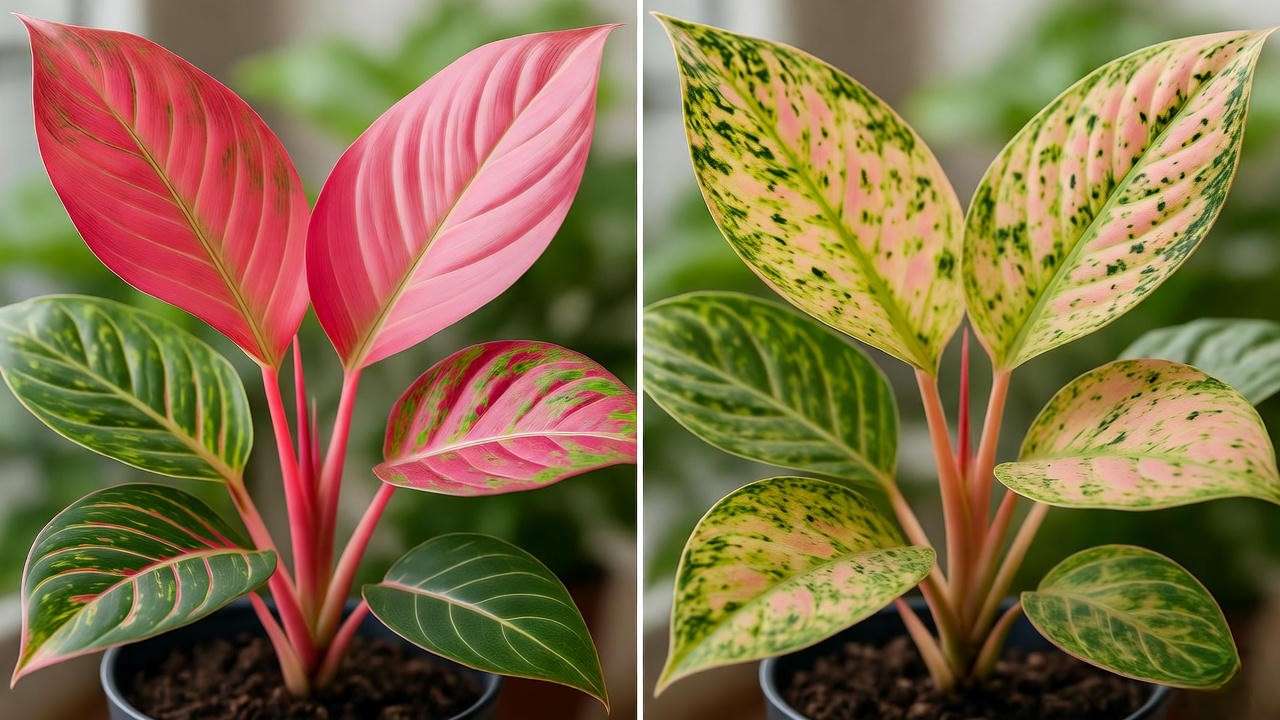
Leaf Color Fading
If your Pink Panther’s pink hues turn green, it’s likely due to insufficient light or nutrient deficiency. Move the plant to a brighter spot with indirect light, and check your fertilizing routine. If the issue persists, inspect roots for overcrowding or rot, which can limit nutrient uptake.
Root Rot and Overwatering Issues
Root rot, caused by overwatering or poor drainage, is a common issue. Symptoms include mushy roots, drooping leaves, or a foul smell from the soil.
Fixes:
- Remove the plant, trim affected roots, and repot in fresh, well-draining soil.
- Adjust watering habits and ensure the pot has drainage holes.
- Monitor soil moisture with a finger test or moisture meter.
Propagating Your Pink Panther Plant 🌿
Why Propagate?
Propagation lets you multiply your Pink Panther Plant for free, share with friends, or fill your home with more greenery. It’s also a fun way to engage with your plant and learn its growth habits. Spring or early summer is the best time, as the plant is in active growth.
Step-by-Step Propagation Guide
Method 1: Stem Cuttings in Water
- Cut a 4-6 inch healthy stem below a leaf node using sterilized scissors.
- Remove lower leaves to expose the node.
- Place the cutting in a glass of water, ensuring the node is submerged.
- Change water every 3-4 days and keep in bright, indirect light.
- Roots should form in 2-4 weeks; transfer to soil once roots are 1-2 inches long.
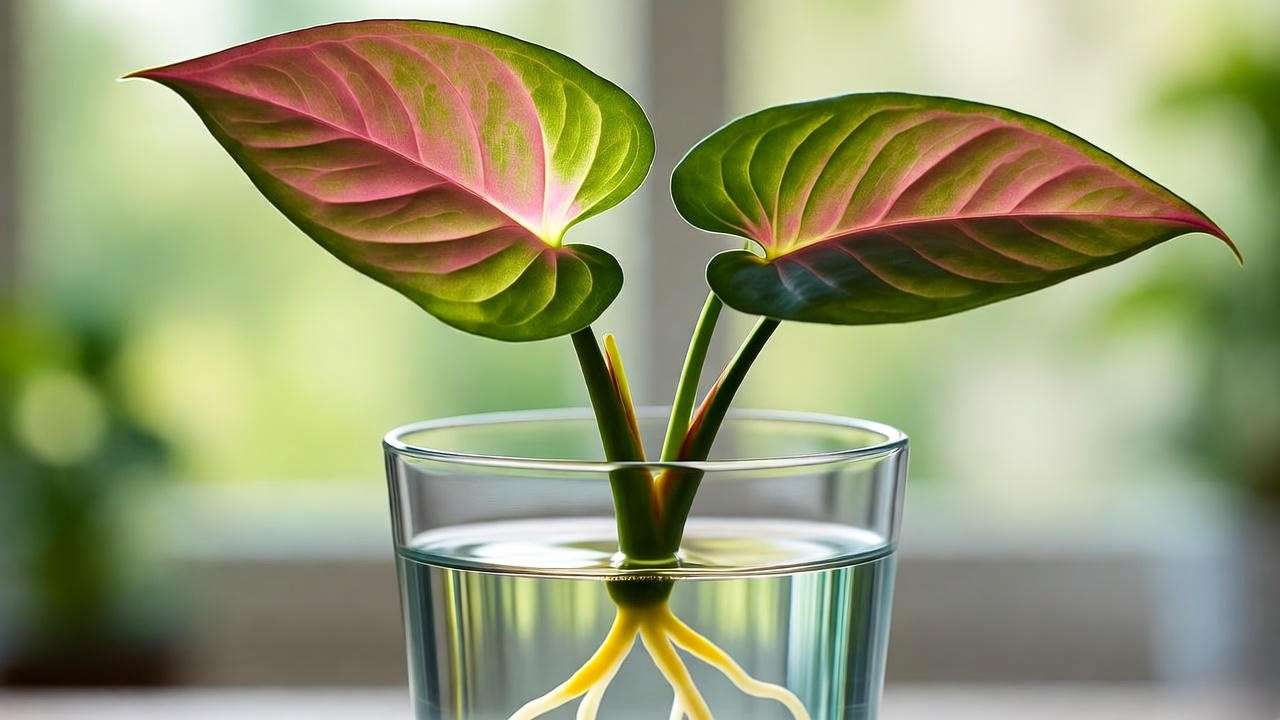
Method 2: Stem Cuttings in Soil
- Prepare a small pot with moist, well-draining soil.
- Dip the cut end of the stem in rooting hormone (optional for faster rooting).
- Plant the cutting 1 inch deep and cover with a plastic bag to trap humidity.
- Keep soil lightly moist and place in indirect light.
- Roots form in 3-5 weeks; remove the bag once new growth appears.
Expert Tip: Mist cuttings lightly to maintain humidity, but avoid soggy soil to prevent rot.
Caring for New Propagations
Newly rooted cuttings need gentle care. Keep them in bright, indirect light and water sparingly until established. Transition water-rooted cuttings to soil gradually to avoid shock. Avoid fertilizing for the first 6-8 weeks to let roots settle.
Common Mistake: Overwatering new propagations can lead to rot, so err on the side of under-watering.
Styling and Displaying Your Pink Panther Plant 🏡
The Pink Panther Plant’s vibrant pink and green foliage makes it a natural focal point in any space. Its compact size offers endless styling possibilities, whether you’re aiming for a minimalist vibe or a lush indoor jungle. Here are some creative ways to showcase your plant:
- Terrariums: Place your Pink Panther in a glass terrarium for a modern, contained display. Pair it with moss or small pebbles for a tropical aesthetic.
- Hanging Pots: Use a macramé hanger to elevate your plant, letting its rosette shape cascade slightly for a boho-chic look.
- Mixed Planters: Combine with other low-maintenance plants like pothos or snake plants for a vibrant, textured arrangement.
Design Tip: Choose a contrasting pot—white, black, or metallic—to make the pink foliage pop. A ceramic pot with subtle patterns adds personality without overwhelming the plant’s natural beauty.
For inspiration, try placing your Pink Panther on a sunny windowsill alongside other Tradescantia varieties, like the Tradescantia zebrina, for a cohesive color palette. Rotate the pot every few weeks to ensure even light exposure and balanced growth.
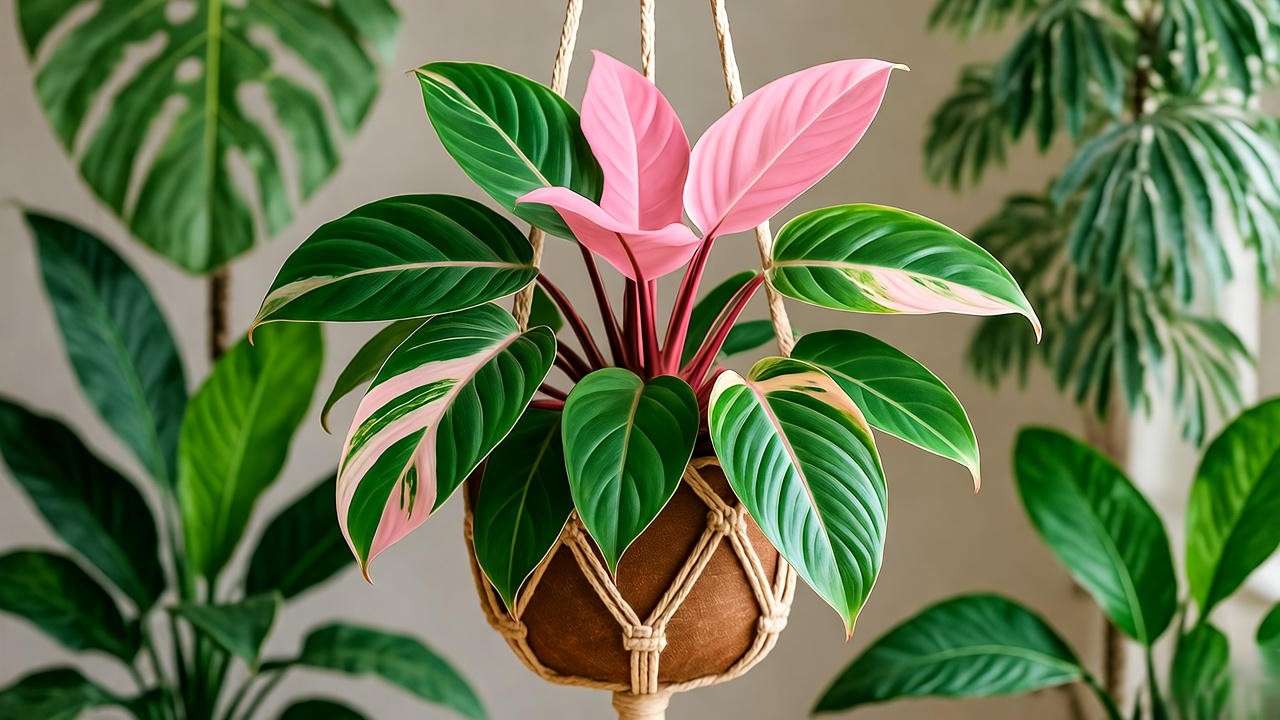
Expert Insights: Maximizing Pink Panther Plant Health 🌟
As a horticulturist with hands-on experience growing Tradescantia spathacea cultivars, I’ve learned that consistency is the secret to a thriving Pink Panther Plant. Here are advanced tips to keep your plant in top shape:
- Monitor Light Daily: Even slight changes in light (e.g., seasonal shifts) can affect color vibrancy. Adjust placement as needed to maintain those pink hues.
- Use a Hygrometer: Invest in a simple hygrometer to track humidity levels, especially in dry climates or heated homes.
- Rotate Care Routines: Alternate between watering, fertilizing, and pruning to avoid overwhelming the plant with too much attention at once.
Case Study: A client once brought me a Pink Panther Plant with faded leaves and leggy growth. By moving it to a brighter spot, refreshing the soil, and pruning back half the stems, the plant regained its vibrant colors within two months. This experience underscores the importance of addressing light and soil issues promptly.
FAQs About Pink Panther Plant Care ❓
To address common reader questions and boost SEO, here are answers to frequently asked questions about the Pink Panther Plant, based on search intent and community forums:
Is the Pink Panther Plant pet-safe?
No, the Pink Panther Plant is mildly toxic to cats and dogs if ingested, potentially causing mouth irritation or digestive upset. Keep it out of reach of pets, such as on high shelves or in hanging planters. If you have curious pets, consider pet-safe alternatives like spider plants.
Why are my plant’s leaves turning green?
Fading pink hues usually indicate insufficient light. Move your plant to a spot with bright, indirect light, such as near an east-facing window. If light is adequate, check for nutrient deficiencies and fertilize with a balanced formula.
How fast does it grow?
With proper care, the Pink Panther Plant has a moderate growth rate, adding noticeable size within 6-12 months. Regular pruning and optimal conditions (light, humidity, nutrients) can accelerate growth.
Can it survive low light?
While it can tolerate low light, the Pink Panther Plant’s colors will dull, and growth may slow. For best results, provide bright, indirect light to maintain its vibrant pink and purple tones.
Conclusion: Your Journey to a Thriving Pink Panther Plant 🌈
Growing a stunning Pink Panther Plant is within reach for anyone willing to follow a few key care principles. Provide bright, indirect light to keep its pink foliage vibrant, water only when the soil is dry, and maintain moderate humidity for tropical flair. Regular pruning and occasional fertilizing will ensure your plant stays healthy and bushy. Whether you’re propagating cuttings to share with friends or styling it as a centerpiece, this plant rewards minimal effort with maximum impact.
Ready to make your Pink Panther Plant the star of your indoor garden? Share your plant photos on social media with #PinkPantherPlantCare, and let’s inspire each other to grow greener! 🌿 For more plant care tips, check out our guides on Top 10 Low-Maintenance Houseplants or How to Create an Indoor Jungle.

